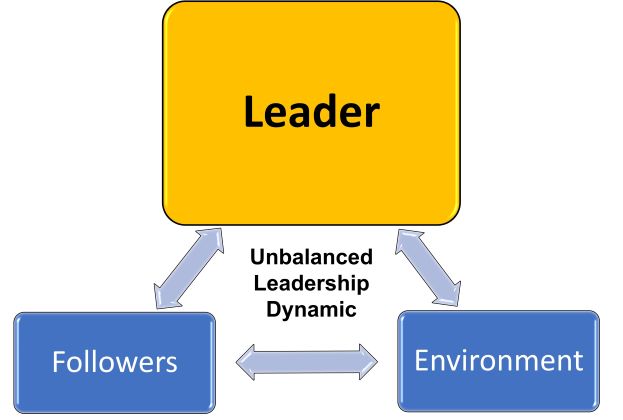PSST! The Leadership Gaps are Coming from Inside Your Organization!
Category : Leadership
You are probably very familiar with the well-worn old horror movie trope where people are receiving threatening calls from someone only to find out that the calls are coming from inside the house? Of course, you would have to suspend reality because when this trope was first used, the people were still only using landlines. Someone calling you from inside your house using your landline was impossible.

Unfortunately, that’s not the case with leadership today. Ever since I’ve been writing about leadership gaps in leadership profiles at various levels of organizations, I’ve received several direct messages from people telling me about the leadership gaps present where they work. Many did not want to ‘Like’ or comment on my articles or blogs for fear of reprisals. It is up to the leaders at these and any other organization to identify and repair these gaps which could result in toxic or unbalanced leadership situations.
It may not be on your team, but it could be happening on other teams throughout your organization. For large organizations, there are probably several dysfunctional teams spread throughout the organization. The leadership gaps are coming from inside your organization and senior leaders must do something about it today.
The ‘Great Resignation’ and ‘Quiet Quitting’ trends are just illuminating problems that have existed for years.
With the ‘Great Resignation’, leaders need to remember that people typically don’t leave bad jobs, they leave bad bosses. The return from the pandemic has shifted the power dynamic from the employer to the employee. In a tight labor market, people are finding it a lot easier to find and different job, preferably in a better situation. The side effect of massive resignations requires organizations to address the fact that their best people/leaders are usually the ones who leave first. If they are a good employee for you, they will be a good employee for another company. Their departure is costly to replace involving a loss of knowledge, loss of continuity and hiring costs. Disrespectful, unappreciative leaders and bad culture are leadership issues, which contribute to these resignations.
Frankly, the ‘Quiet Quitting’ trend is not all that new. People have been doing the bare minimum in certain jobs for years. In out definition of leadership, leaders must “…direct and inspire a team or organization to reach a goal or follow a vision…” Both words, direct and inspire, are required to be an effective leader. Leaders who inspire but provide little direction get the team excited but are not effective at reaching their goals. Leaders who provide direction, but little inspiration get teams who do only what is expected of them. No more. No less. Therefore, lack of inspiration is a leadership issue resulting in ‘Quiet Quitting’.
Resolving these situations requires a new commitment to managing an organization’s leadership resources. It requires:
- Quantifiably assessing all of your leadership resources.
- Creating strategies to retain your best leaders, grow your next level and monitor the third level of leaders.
- Continuously monitoring and adjusting the leadership resources management strategies.
This quantifiable approach eliminates subjective interviews, relationship-based promotions and selections with a quantifiable, repeatable and unbiased leadership management process that impacts leadership resources deployment in the areas of retention, hiring, promotions and assignments. It also enables equal access and improves diversity, equity and inclusion initiatives.
Organizations must act quickly to minimize the impact of toxic and unbalanced work environments on their staff. If you don’t mind your best people leaving, your competitor will surely welcome them.
Read more about our leadership resources management solution at LeadershipRMS.com.
